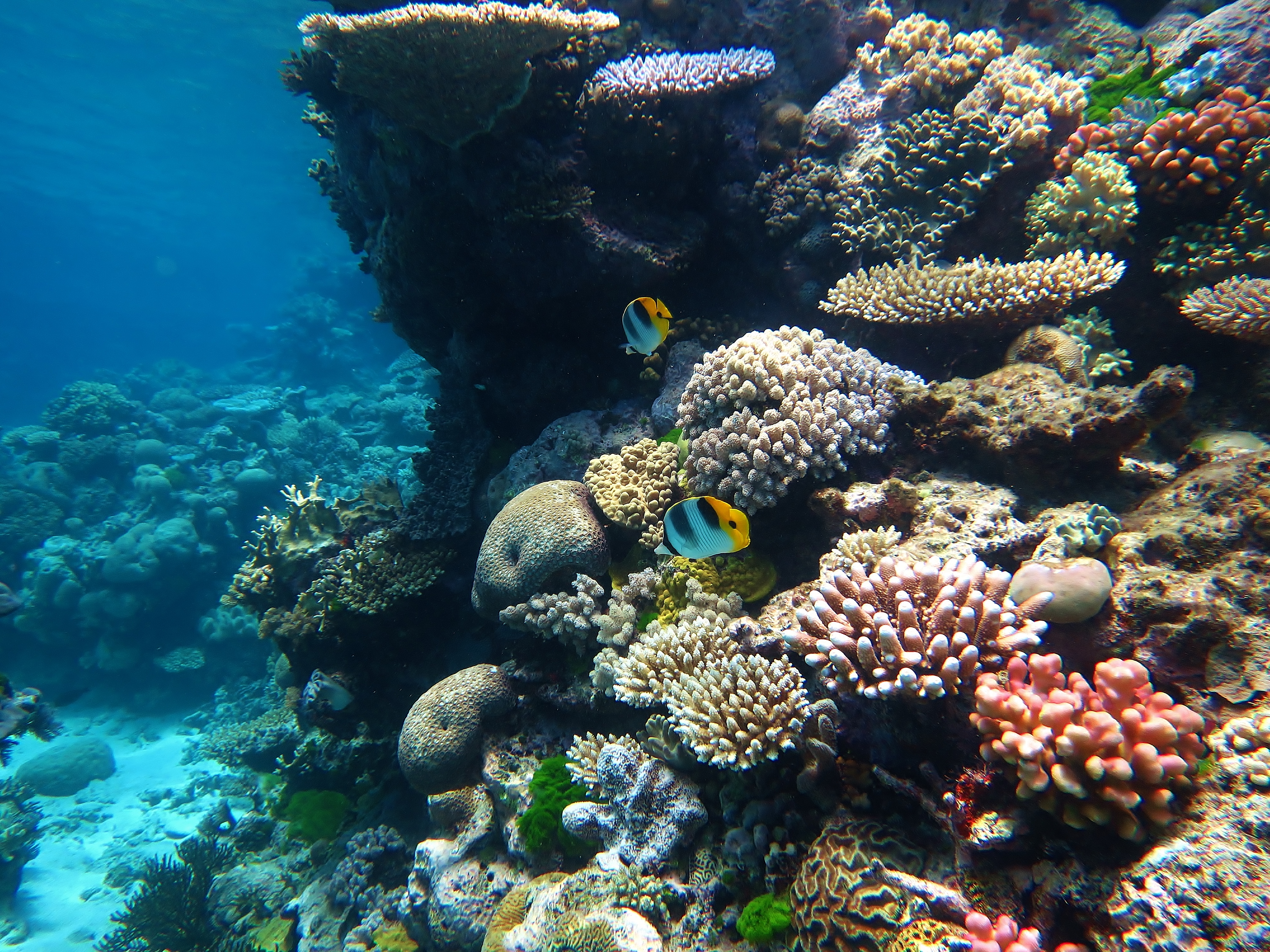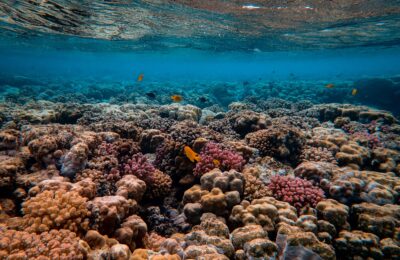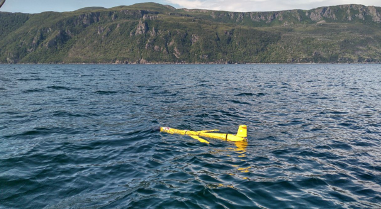This article was originally posted in January 2019. It has been re-posted here following a server issue in which the original post was accidentally removed. For a recent article on the persistent bleaching that still plagues coral reefs today, see this article from April 1st, 2020.

The Great Barrier Reef – the world’s largest coral reef – is easy to take for granted. Located off the northeastern coast of Australia, it spreads 133,000 square miles (just under the size of Germany) across shallow coastal waters, making it the largest structure on Earth made by living organisms. It contains over 600 types of coral and many thousands of species of sea creatures. It’s the most majestic coral reef system of many around the world that are collectively home to about a fourth of all marine life. The health of these reefs can impact human lives in a variety of ways: from providing food resources, to protecting us from storms, to being used as tools to study our past.
Vast underwater cities

Coral reefs bring to mind visuals of vividly colorful, glowing underwater structures; lively environments inhabited by otherworldly creatures that move in harmony with one another (Fig. 2). Ironically, I can’t help but think that they’re similar to human cities – the same cities that pump carbon dioxide into the atmosphere at alarming rates, contributing to climate change that is destroying such natural wonders.
But if you take a closer look at a coral reef, you’ll see that they’re just like cities in spirit – filled with sturdy towers, plates, domes, and branches of limestone exoskeleton. Their limbs are covered in quivering, tentacled holes – or polyps – that dance around collecting algae, secreting material for limestone, continuing to grow bigger and bigger. Corals seem to want to go on living – to grow into large, ostensibly indestructible colonies. Although I’ve never visited a coral reef, there is a certain efficiency and optimism to them that evokes my affection for cities.
Coral bleaching
There have been many recent efforts to document the extent to which corals have died worldwide by bleaching since the 1970s. Coral bleaching events are primarily caused by more frequent and intense marine heat waves. A small change in temperature can go a long way to harm the normal bodily functions of a coral – similar to when we get fevers. Stressed coral polyps begin to expel the algae, zooxanthellae, that give them their beautiful color along with most of the energy they require to live.
Then the polyps disintegrate. Vast colonies of corals transform into colorless, uninhabitable exoskeletons, white like ghosts; these are bleached coral reefs. The largest reef in the world, despite its size, is not immune. The most recent severe bleaching events occurred back to back from 2016 to 2017, after which the media reported half of the Great Barrier Reef had just died.
The corals remember
A study led by Dr. Terry P. Hughes of James Cook University in Queensland, Australia aimed to examine these coral bleaching events in the context of ecological memory – that is, the ability of the past to influence the present trajectory of ecosystems. Do living corals remember past trauma? If so, does it cripple them, or make them more resilient?
The researchers used sea surface temperatures from satellite measurements to find temperature anomalies – that is, how much the temperature of the sea surface rose above the summer average. The heat stress was measured in terms of degree-heating-weeks (DHW) – the amount of weeks corals were exposed to high temperatures. The higher the heat stress, the longer the corals were exposed to warmer-than-average temperatures.
In addition to analyzing temperature data, the researchers visually surveyed the Great Barrier Reef by flying aircraft over individual reefs during the summers of 2016 and 2017 to observe the extent of coral bleaching. From about 500 feet above the surface, they were able to visually separate each reef into five categories of bleaching severity.
They found that the corals did indeed have a memory; although heat stress was often stronger in 2017, coral bleaching was less extreme. Bleaching correlated differently with heat stress between 2016 and 2017, with bleaching in 2017 having been less affected by the same amount of heat stress. They posited that this effect is likely due to heat-tolerant corals having survived and adapted to warmer conditions, while more vulnerable corals died out in 2016.
Bleaching adds complexity to coral vulnerability
The data in this study does not imply that stronger, heat-tolerant corals will replace the dead corals, or that things will go back to normal. In fact, researchers are studying the ecological impacts of declining diversity due to bleaching events such as these. However, the results do indicate that climate-driven disturbances can no longer be perceived as isolated events. As they become more frequent, we would be wise to look back at the legacy left by prior climate events.
The researchers use tropical cyclones as an example, since they were the biggest threat to corals before bleaching became common. While corals have built up a natural resiliency to cyclones over time, climate change is expected to make storms more intense. New coral populations might not have the capacity to recover from more intense cyclones. They might not be able to manage severe bleaching and an intense cyclone in the same season – a likely future scenario. With temperatures steadily rising, we can expect bleaching to compound damage to corals from other climate disasters.
The legacy of climate change
It almost seems cruel that coral bleaching leaves behind skeletons. Stark white coral ghost cities. Abandoned, dilapidated buildings. The legacy of coral bleaching is difficult to ignore with such morbid reminders. Perhaps it’s even worse that the unraveling impacts of climate change on human civilization are often easy to overlook (for now), being so varied and nuanced. Extreme weather, food shortages, water scarcity, sea-level rise – to name a few – will continue piling up on the list of climate-driven events destabilizing the world. I wonder how long it will take for our own memories of climate-driven events to influence our trajectory going forward.
I’m a PhD student at the University of Rhode Island’s Graduate School of Oceanography. I use a small-scale computer model to study how physical features like surface waves at the air-sea interface produce friction for the wind that can limit momentum, energy, gas, and heat exchange between the ocean and atmosphere. In the future, I hope to learn more about the role waves play in different parts of the world as weather and climate patterns evolve. Also, I love to write.


